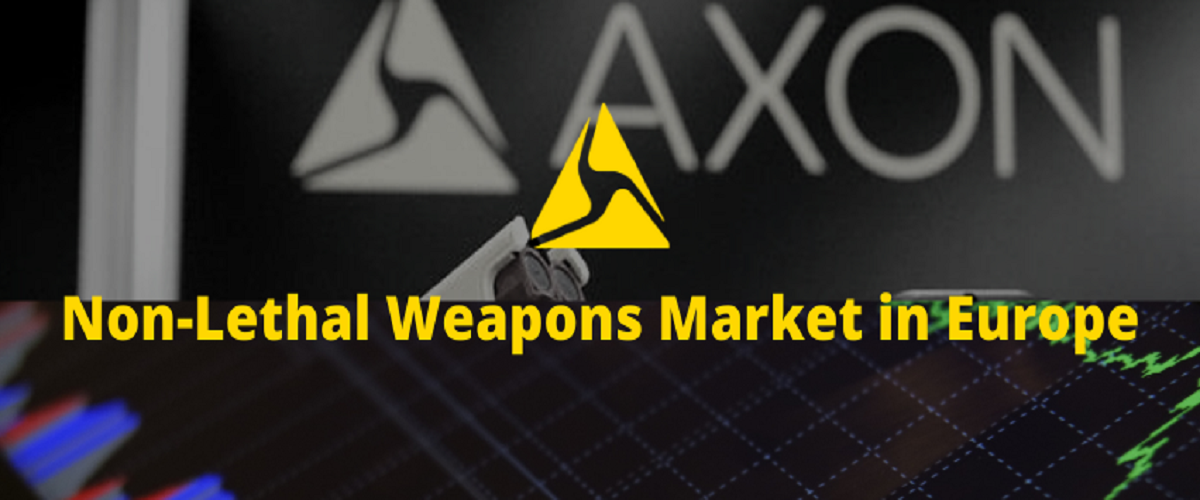Just like in the United States, riots are forcing law enforcement agencies in Europe to procure non-lethal weapons. Civil unrest has been seen in France, for example, where the marches of the Yellow Vest Movement have led to clashes with the police. Similar protests have occurred in other EU countries such as Spain, Italy, and Romania, as well as in Russia.
The advances of non-lethal technology are said to offer more effective control over resistive suspects, whilst protecting the latter from serious injuries. The latest instances of violent protests have motivated governments to encourage the use of non-lethal weapons in case of emergencies.
One such example includes the approval by the Interior Minister of Italy - Matteo Salvini - of a trial of Tasers across 11 cities in the country. The conducted energy devices, developed by Axon Enterprise, were presented to the police forces patrolling the streets of these cities.
Leading Countries and Companies
At the moment, the European leader in the non-lethal weapons market is the United Kingdom. The country’s police force has a long tradition of carrying less-lethal weapons, including Tasers, batons, and canisters of mace spray.
In September 2019, the Home Office announced that it would spend an additional GBP 10 million on Tasers to equip more than 10,000 police officers in England and Wales. Later on, in March 2020, the police forces received GBP 6.7 million to purchase a total of 8,155 Tasers, provided by Axon Enterprise (Nasdaq: AXON).
Company-wise, some of the most prominent players in the European non-lethal weapons market include Fiocchi Munizioni SpA, FN Herstal, Rheinmetall AG, RUAG Group, and General Dynamics Ordnance and Tactical Systems. These businesses are actively investing in the R&D of weapons and ammunition that may have no lasting physical damage on the victim, but that is equally effective in controlling and dispersing crowds without the firing of expensive ammunition.
The development of such technologies is in sync with the calls from the wider society for the elimination of police brutality. Consequently, we can expect law enforcement agencies to take the public mood into account when procuring weapons in the future, which may well lead to a significantly higher uptake of non-lethal weapons.
Key Figures and Predictions
A report compiled by Mordor Intelligence predicts a 2% CAGR across the continent within the forecast period of 2018-2026 (Mordor Intelligence, 2021). Furthermore, a study from Eurostat in 2019 showed that the general government's total expenditure on ‘public order and 'safety' across the 27 EU members stood at 1.7% of the bloc’s GDP. The figure included the following categories: ‘police services', 'fire protection services', 'law courts', 'prisons', 'R&D related to public order and safety' as well as expenditure not elsewhere classified.
Out of these, 0.9% of GDP was spent on police services, which amounts to EUR 120 billion. As a ratio to GDP, Bulgaria and Greece (both 1.4 % of GDP) spent the highest amount on police services followed by Cyprus, Hungary, and Latvia (all 1.3 % of GDP) (Eurostat, 2021).
Where Do the Opportunities Lie?
The key takeaway from these numbers is that the law enforcement market in Europe represents a lucrative opportunity for businesses interested in supplying their goods and services to government clients. The police force is instrumental in maintaining public order and as such, there will always be a need to keep police officers equipped with the most suitable and modern gear.
That being said, the evident shift in society whereby the citizens increasingly insist on fundamental changes in which the police force reacts to civil unrest, suggests that non-lethal weapons may become the preferred choice for authorities.
Finally, knowing which members tend to spend the most of their GDP on police services, could be instructive of the expected growth in specific geographic markets. In this case, it appears that it is predominantly countries from the former Eastern bloc, plus Greece and Cyprus, that focus most heavily on stepping up their game in the area. Therefore, one can expect exciting tender opportunities in these geographies.
As a global provider of government procurement data, TenderAlpha.com operates the largest database of public contracts, covering the period from 2010 onwards. The platform gives its users access to current, past, and upcoming opportunities, offering them a comprehensible picture of the market they are interested in. To see how you can benefit from the system, request a demo now.
This article was written by members of TenderAlpha's team and does not serve as a recommendation to buy any stock. TenderAlpha is not receiving compensation for it and we have no business relationship with any of the companies mentioned in the article.
